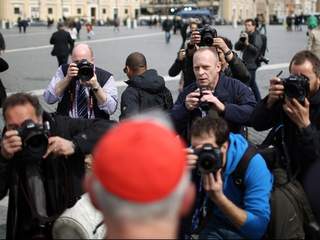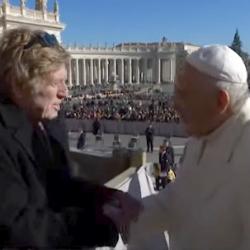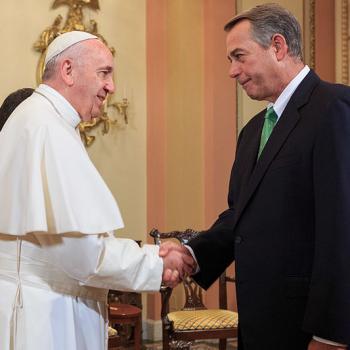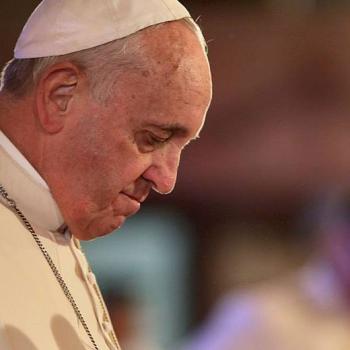How does media coverage of the Vatican work? Some insight from someone who knows, via web journalist Tom McGeveran:
I Skyped Jason Horowitz, an old colleague of mine who’s been dispatched to the Vatican by The Washington Post, and who worked a while back in the New York Times’ Rome bureau, for some perspective. And immediately we got onto the topic of the foreign press’ reliance on Italian media to drive their stories forward.
“They are our only door, it often feels like,” he said.
He assured me that the on-the-ground press operation at the Vatican is determined almost entirely by the Italian press, for whom the Vatican is a constant topic whether a pope is being elected or not, and who massively influence the narrative that’s being fed back to us by our own media who are descending on the Vatican now. And given the expectations of American news consumers like me, that’s problematic.
“First of all, it simply goes back to: it’s Italy, so everything is politics, and because the papers themselves were basically historically the mouthpieces of political parties or closely affiliated with political parties in Italy, the Vatican coverage often got wrapped up in that. So the papers that supported the old Christian Democrats that controlled Italy for a long time, the Christian Democrats were close to the Vatican, so you had those papers constantly defending the Vatican.”
I asked Horowitz what the major American outlets were getting on their own, or how heavy is their dependence on the story-lines originating in the Italian press.
“I would call it total,” Horowitz said.
Among the exceptions, Horowitz didn’t particularly stress any mainstream American media, though the usual suspects (his own paper, The New York Times) are working hard on the ground to develop the story independently (and in this, I think he’s being modest about his own work, and I have mentioned Rachel Donadio and Laurie Goodstein of The New York Times as examples of real American reporting on the conclave).
“There are a couple of Americans who are independently sourced and who are quite frankly great. John Allen at The National Catholic Reporter is as good as anyone I think, and he’s actually better in a way because he has American journalistic standards that he has to adhere to and does. So he’s just frankly very impressive. There’s a guy named John Thavis who is an old reporter for the Catholic News Service and he’s out on his own now and has written a book.”
But they’re not the ones that seem to be driving the news we’re seeing here in mainstream outlets.
“All the kind of story-lines that people are writing right now, for instance, have essentially come down to: it’s an American-German axis, with some Italians basically that are not in the curia, that is an axis against the curia cardinals who are aligned with the Brazilian candidate. You look at the American coverage and that is all over the place.
Read it all. It’s a fascinating glimpse into a beat that rarely gets much attention — except, of course, when there’s a papal election.












